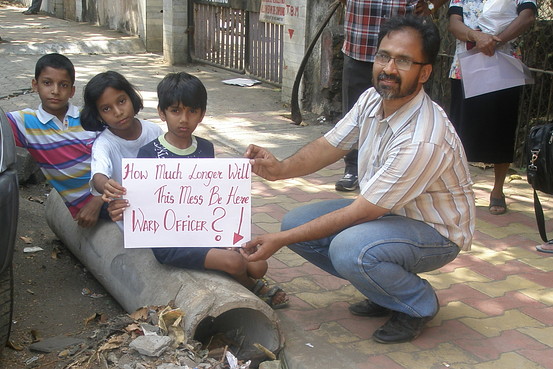India’s Right-to-Information Act, which came into effect October 13, 2005, was a milestone piece of legislation for the country, allowing Indian citizens to file requests for information to almost all government bodies. Prominent Right to Information (RTI) activist Krishnaraj Rao looks at what RTI has meant for the country so far.
Looking back at six years of RTI, it’s clear that the battlefront has moved significantly from where it was in 2005. We RTI activists gained a large amount of ground, but we are also at risk of losing some of those gains if we are unwilling to promptly learn and adapt.

Territories Gained
During the past six years, there has been a shift in public consciousness. In the first 58 years after Independence, the people of India received information (or misinformation) about governance through the media. Then, with the passing of the RTI Act in October 2005, the corridors of power were suddenly awash with the queries of citizens – a pent up force of decades of silence had burst forth.
To receive this sudden inflow, a mechanism consisting of millions of Public Information Officers was created all over the country in the initial months. To handle the appeals that followed, thousands of first appellate authorities were designated, and to handle their disputes in turn, second appellate authorities were appointed in the form of Information Commissioners in states and at the Center.
Empowered by this machinery, people started going straight to the source of the information, as in administrative offices, and getting detailed knowledge of how their tax rupees were being spent. Many citizens became RTI activists, and actually evolved into suppliers of information for press and television, rather than consumers.
RTI has bred a new generation of opinion-leaders. In the years since 2005, many RTI activists, having acquired deep knowledge of various domains of governance, have grown in social stature and gained respectability in the eyes of the media. Private individuals and groups who have probed deep into affairs of the state and various fields that impact society, are now discovering their public voice. They are carving out a public space. Their opinions, backed up with information, have gained legitimacy and power. Such people are leveraging social and mass media to make their voices ring out loud and clear. The common man is no longer the ill-informed and mute observer of events depicted by R.K. Laxman’s cartoons; he can no longer be ignored. This has been a very important gain.
Over the last five years, citizens have re-engaged with the government, undoing the ill effects of decades of disengagement and cynicism. There is an uprising against the old ways of doing things; people are calling into question legislations passed and every step that the state and governments take. RTI has claimed the scalps of half a dozen ministers at state and central levels, with a few now cooling their heels in judicial custody.
It isn’t only the administration at the receiving end. Profiteering business lobbies, who shared a cozy relationship with ministers and bureaucrats, are now feeling vulnerable. Activists are following the paper trails left by them in the corridors of power.
Territories at Risk
The success of the RTI movement carries within itself the seeds of its destruction. It is necessary for civil society to strategize and exercise restraint to prevent these seeds from taking root. To recap, RTI depends on a two-stage appeal process for its effectiveness. Information Commissioners at state and central levels are effectively the main custodians or watchdogs of the common man’s right to information. Despite there being around a hundred information commissioners, pendency has built up at this level, as more appeals pour in than information commissioners can handle. Countrywide, the queues of pendency have already crossed a year on average. If it gets much worse, then the Public Information Officers at the bottom will cease to fear the Information Commissioners, and will start denying information to citizens with impunity. If we allow this to happen, much of our gains will be lost.
To prevent this scenario, it is of course important for us to press for more and better-qualified Information Commissioners, and for better staff, office facilities and budgets. But even while we do this, it is crucial and urgent for RTI activists to show self-restraint in exercising the second-appeal option. Rather, we should think in terms of filing other differently worded RTI applications to achieve the goal of getting the desired information. Let us remember that as we are not barred from making new improved RTI applications from different angles, there is no need to contest each appeal to the bitter end. Also, we should leverage the power of RTI with other underused mechanisms available to us, such as complaints, petitions and public mobilizations.
As the RTI movement matures, we see that right to information is a limited resource. Now that the first flush of victory is over, let us learn to wisely allocate this strategic resource in the next round of our campaign to return power to We, the People.
(Krishnaraj Rao is a prominent Right-to-Information activist and journalist based in Mumbai. The article was first appeared on Wall Street Journal)









